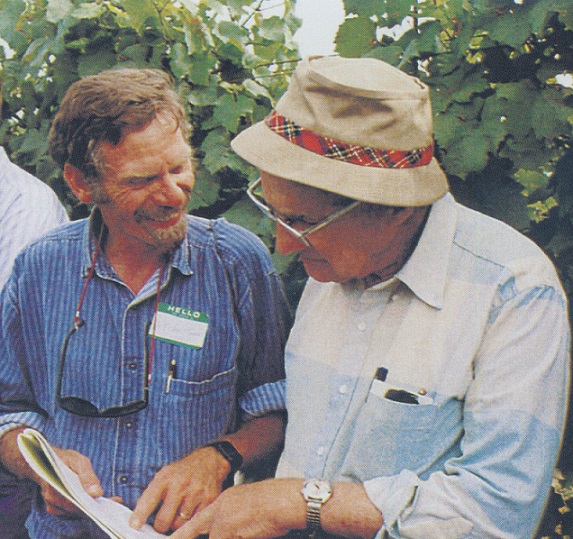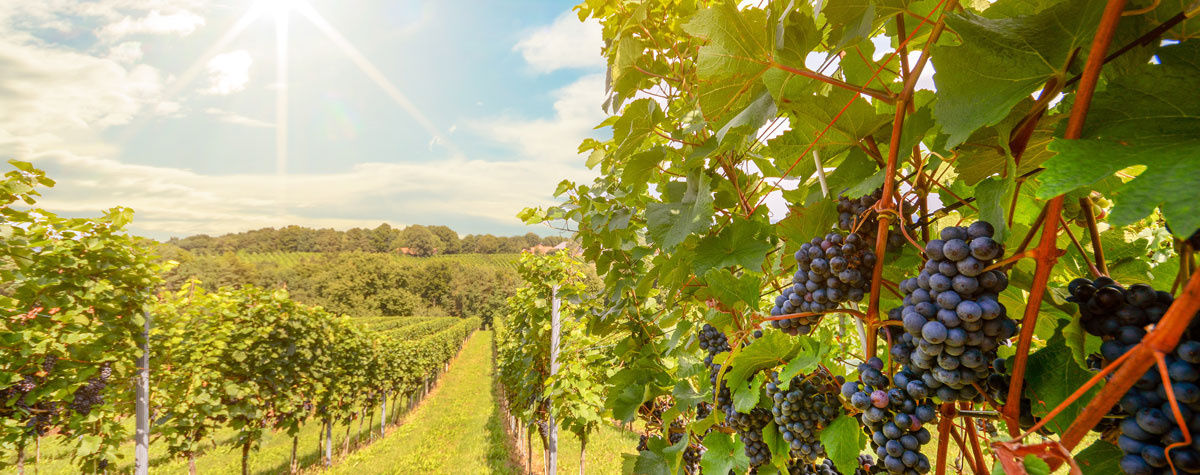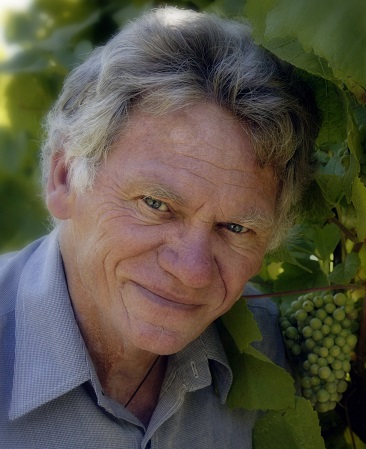Several months were spent making detailed measurements of the illumination of different leaves and bunches. In Bordeaux we found that the vineyards with open canopies, and sufficient exposure to sunlight of leaves and bunches, were a feature of prestigious vineyards; vineyards of lower classification were more vigorous with more and larger leaves, and so more leaf and bunch shading. The outcome was not a surprise to us, because of our respective previous studies in Australia and France, where we had proven the same phenomenon in scientific studies.
Why measure what you can see?
So, not really a lightbulb moment, just realising the obvious. I did not have to measure if a leaf or bunch is in the shade or exposed, I can see it! But to be able to publish my results in a scientific journal I needed to do measurements, and tell how I made them. However, if I could just describe my visual impressions, that would be enough for a practical method of assessing the canopy for prediction of ability to produce quality wine.Then I considered the other attributes of a canopy, which were known to affect wine quality, and could also be easily assessed by eye. There were several obvious ones, related to vigour. These are leaf colour, leaf size, the amount of lateral growth and the degree of active shoot tip growth. Active shoot growth is especially important, since the shoot tips compete very strongly with ripening bunches for sugars etc. The extent of lateral growth also has special significance. Shaded canopies are often due to excessive lateral growth.
So the concept of a visual scorecard was born. The assessment is best made soon after veraison is complete. There were several modifications before final publication in a scientific journal and in the book Sunlight into Wine. The scorecard has eight components, each with a maximum score of 10 points, totalling 80. Each component has five possible scores, from 0 to 10. What follows here are tips for assessing each character.
‘Slightly small leaves which are green and healthy but slightly dull and pale are preferred’

Stand away from the canopy for the first three assessments.
- Canopy gaps: Define the canopy outline in your mind, avoiding any large holes which may occur between vines. Simply estimate the proportion of canopy gaps, ie. where you can see right through.
- Leaf size and colour: Here you will need to have experience with the variety, to know the range available. Look at exterior leaves only, just above the bunch zone. Large, shiny, very dark green leaves indicate high vigour. Slightly small leaves which are green and healthy but slightly dull and pale are preferred.
- Canopy density: This is assessed just above the fruit zone. With your face near the canopy, fix your gaze straight ahead. Use your finger to move leaves or bunches out of the way, counting them as you do. Count zero for a canopy gap. Repeat for a meaningful average.
- Fruit exposure: Fix your gaze at part of the fruit zone, then brush leaves away to determine the fruit zone not visible from the outside, and estimate the percentage of fruit exposure. Repeat as necessary.
- Shoot length: Count the node number on representative shoots and average. Closing your eyes and reach into the canopy helps a random selection.
- Lateral growth: If the shoot has been trimmed, most lateral growth is near the cut. Vigorous shoots have lateral growth at most nodes, and the longest are five nodes or more long. Limited vigour shoots have infrequent lateral growth, at most two nodes long.
- Growing shoot tips: Assess all main shoot tips and laterals. Actively growing shoots will have a blunt shoot apex clearly beyond younger leaves. Inactive shoot tip growth will show few young leaves, or may even fall off.
An actively growing shoot tip (right), and one recently stopped (left). Note the much longer internode length (spacing between leaves) for actively growing, and how they are compressed for recently stopped. Actively growing shoot tips just before and after veraison are a major threat to wine quality.
Scores
A score of 75-80 points indicates a very good canopy with the potential to grow grapes of high potential wine quality. Vines will be of moderate vigour. A low scoring canopy of around 20 points will correspond to vigorous vines with dense canopies, and leaf and bunch shading.‘The scorecard can be a useful way of pre-harvest vineyard classification of vineyards for quality. In my opinion, it is a more useful tool than the process of tasting just a few berries’
Conclusion
The scorecard is very quick and easy to use, only requiring a few minutes for each canopy assessed. I strongly suggest that you have joint training sessions for scorers, to share values and ideas. Work with representative canopies. It can be easily digitized by loading on a mobile phone, and supporting photos can be taken.I wish I could easily add speed of fruit colouration, and rate of lignification. In my experience, both of these are very useful attributes, but I could not build them easily into a general scorecard.
Try this scorecard, it can be a useful way of pre-harvest vineyard classification of vineyards for quality. In my opinion, it is a more useful tool than the process of tasting just a few berries, used by many oenologists.
Full details of the scorecard can be found in my book of canopy management Sunlight into Wine, available from www.smartvit.com.au.

Here I am showing the vineyard scorecard to my mentor, Professor Nelson Shaulis of Cornell University, during a demonstration in a Long Island, New York, vineyard.













.png)






